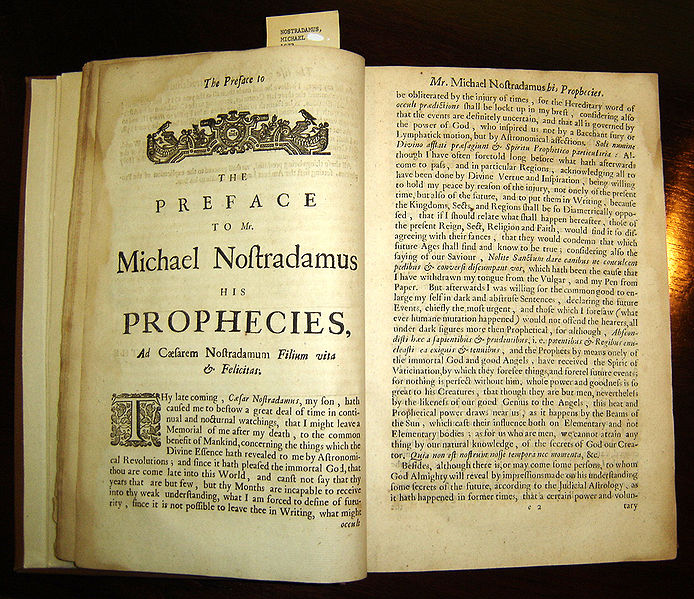Every so often, one reads a sentence that just takes one’s breath away from an otherwise intelligent writer who uses Darwinism to help explain the world: This from Colin Dickey’s “Quack Prophet” (Lapham’s Quarterly):
Whether it’s the Dead Sea Scrolls or Finnegan’s Wake, there’s a long literary history of taking the garbled and the fragmented and looking for lucid meaning beneath. The science writer and professional skeptic Michael Shermer has gone so far as to argue that we’re hard-wired, from an evolutionary perspective, to look for such hidden meanings. “From sensory data flowing in through the senses the brain naturally begins to look for and find patterns, and then infuses those patterns with meaning,” Shermer writes. “We can’t help it. Our brains evolved to connect the dots of our world.” By adjusting the signal-to-noise ratio, Nostradamus introduced enough static into his Prophecies that they could be all things to all readers, poetic Rorschach blots of detail and blur.
Excuse us, but: The Dead Sea Scrolls are a remarkable 1947 find (since augmented) of a group of manuscript fragments and artifacts that everyone knew had lucid meaning, but awaited translation and clarification. You didn’t need to be “hard-wired” to notice any of that. Finnegan’s Wake is a deliberately obscure novel written by Irish novelist James Joyce, pored over by generations of academic dullards – to Joyce’s huge amusement, had he lived to see that entire circus play out. Much of it probably did have some meaning; it was written in English by an already successful novelist. Again, no “hardwiring” required to suppose that, though a certain amount of denseness for spending a lot of time on the problem.
It’s not like seeing patterns in the clouds, which might actually be evidence for Shermer’s thesis if not pressed too far – which it nearly always is.
Conflating the Scrolls and Finnegan’s Wake, spiced up with some Shermerite nonsense about how our brains evolved to … whatever, is an appalling but telling example of cultural Darwinism at work.
Those who don’t believe in meaning corrupt and confound it.
Note: The ostensible subject of the piece is that reliable checkout counter tabloid icon, the “prophet” Nostradamus, who was obscure for an entirely unrelated reason – to avoid falsification. Reminds one of something, no … ?
